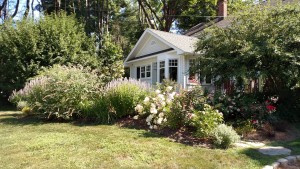Latest Posts
- Have a purpose when backyardingAugust 5 2021
- Study: Time outside alters our microbiomeAugust 4 2021
- Happy National Mutt Day from Mo-MoJuly 27 2021
- New home? Avoid these common mistakes in your yard.July 26 2021
- Infographic: Plan a backyard staycation this summerJuly 22 2021
Categories
Archive
March 23rd
TurfMutt’s “backyard ready” spring planting tips

Even though it may not feel like spring just yet in some parts of the country, it’s officially here according to the calendar. To celebrate, TurfMutt offers these tips for getting your outdoor family room backyard ready this spring. Remember, by choosing the right plants for your climate and lifestyle, you’ll be rewarded with a beautiful green space your entire family will enjoy!
Know your climate zone.
Do you have long, hot summers? Are you in an arid region or a wet one? Understanding your environment will help you select climate-appropriate plants that will thrive with minimal input from you. Check out the USDA Plant Hardiness Zone Map to learn which plants, grasses, shrubs and trees are most likely to succeed in your location.
Understand your lifestyle needs.
Your grass, flowering plants and trees expand the living space of your home. Without our living landscapes, our backyards, patios, fire pits and pool areas would be hotter and less enjoyable overall. Determine how you use your yard, and then plant accordingly. Do you need a shade tree to sit under during hot weather? Do you travel a lot, or will you be home to care for your plants? Do you need a grassy area for your kids and pets to play?
Plant for pets.
Speaking of pets, you’ll want to keep their needs in mind when you’re mapping out your planting plans! Consider planting a hardy grass like buffalo or Bermuda, which is more likely to withstand pet traffic. When pets are in the picture, you’ll want to keep resilient plants and flowers in heavily-trafficked areas of your yard and save the delicate varieties for raised planters on your porch or patio. Finally, know which plants are dangerous to your pets by downloading the ASPCA’s list of poisonous plants.
Plant for pollinators & wildlife.
Your living landscapes aren’t only for your enjoyment, they are also vital to pollinators (bees, butterflies and birds) and other backyard wildlife. These creatures rely on certain plants in your backyard ecosystem for food and shelter. Planting nectar and pollen-rich flowers that are appropriate for your climate (see #1) will help nourish pollinators. Let a pile of grass clippings decompose on your lawn (rather than bagging) to shelter insects, worms and other backyard critters. Dead tree branches can create nooks for butterflies, bees, birds and other wildlife.
Learn more about how to get backyard ready for spring by visiting the living landscapes website





